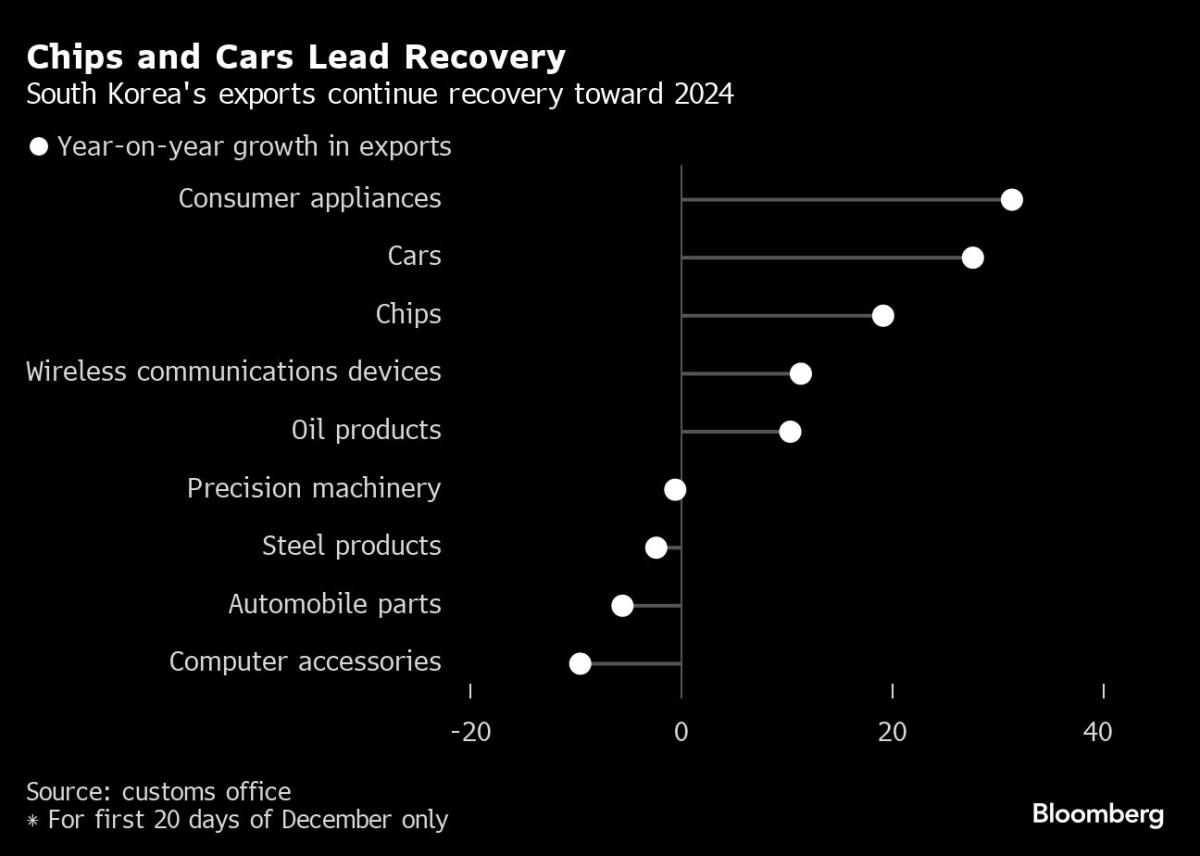(Bloomberg) — The US labor market probably remained sturdy while wage gains continued to ease as 2023 drew to a close, setting up for steady economic growth and waning inflation in the coming year.
Most Read from Bloomberg
Government data on Friday are projected to show payrolls in the world’s largest economy increased by 170,000 in December. That would cap a year in which some 2.7 million jobs were added.
The median forecast in a Bloomberg survey of economists also calls for a 3.9% increase in average hourly earnings from a year earlier, the smallest annual gain since mid-2021. The unemployment rate is projected to tick up to 3.8%.
While the pace of hiring is moderating, a resilient labor market supports views that the economy will continue to expand in 2024, albeit at a slower rate. That’s consistent with the Federal Reserve’s latest economic projections. Fed officials also see inflation cooling.
On Wednesday, the central bank will issue minutes of policymakers’ December meeting, at which officials signaled an end to their aggressive campaign of hiking interest rates. The Fed held its benchmark rate at the highest level since 2001 and penciled in no further increases.
The quarterly projections showed Fed officials expect to lower rates by 75 basis points next year.
What Bloomberg Economics Says:
“Job gains have been concentrated in just two acyclical sectors — health care and government — with flat to negative growth in most industries. As a result, wage growth will moderate in December. Though a Fed pivot may have stunted recessionary dynamics in the labor market, that dynamic isn’t clear enough yet, and our base case remains a persistent increase in the jobless rate in 2024.”
—Anna Wong, Stuart Paul, Eliza Winger and Estelle Ou, economists. For full preview, click here
Also on Wednesday, the government will issue figures on the number of job openings across the economy in November. Economists project vacancies rose from a more than two-year low a month earlier, while remaining consistent with a moderation in labor demand.
The first week of the new year will also include closely watched surveys of manufacturing and service activity in December.
Meanwhile, in Canada, jobs data for December due on Friday will reveal whether the labor market continued to ease as 2023 came to a close.
Elsewhere, a likely bump up in euro-zone inflation, along with purchasing manager surveys in China, may draw the most attention as investors ease into the new year.
Click here for what happened last week and below is our wrap of what’s coming up in the global economy.
Asia
The year begins with December export numbers from South Korea, an indicator that offers an early signal of the health of global commerce and tech demand. Partial figures for the month already point to momentum in overseas sales carrying through to the end of the year.
Also on Monday, Australian home-price data will show how the Reserve Bank of Australia’s interest rate hikes — including its latest move in November — are impacting the property market.
Following on from official purchasing managers index figures released on Sunday that showed factory activity shrank to the lowest level in six months, China’s Caixin manufacturing PMI will offer more of an indication of how the country’s private-sector factories are faring at a time when the pre-festive season peak for exporters has passed.
Likewise, PMIs for several other Asian economies, also due Tuesday, will fill out the picture of the regional economic landscape at the start of the year.
Singapore’s economy is expected to have slowed on a quarter-over-quarter basis in the last three months of the year.
Throughout the week, countries will publish inflation data. Pakistan’s report comes on Monday, Thailand’s on Friday, with numbers from Indonesia, Taiwan and the Philippines also due. India releases a new forecast for 2024 gross domestic product on Friday.
Europe, Middle East, Africa
For the euro zone, Monday will end a multi-year suspension to the region’s fiscal rules aimed at paring debt, heralding a new era of consolidation. The regime was tweaked by finance ministers in a last-minute deal on Dec. 20.
The single currency will turn 25 on Monday, too, with European Central Bank President Christine Lagarde saying the euro has given Europe “greater sovereignty in a turbulent world.”
Her comments — published in a joint op-ed with the heads of the European Commission, Council, Parliament and Eurogroup — celebrate the endurance of a monetary arrangement whose disintegration was often predicted.
As the Greek crisis raged in 2015, for example, former Fed Chairman Alan Greenspan reckoned that it was “just a matter of time before everyone recognizes that parting is the best strategy.” Greece didn’t leave, and instead, the region welcomed its 20th member in 2023 when Croatia joined.
Aside from that, ECB officials tend to stay silent in the first week of the year. In advance of their inaugural decision of 2024 on Jan. 25, they may watch for PMI numbers from Italy and Spain, along with inflation data.
France and Germany will release consumer-price numbers for December on Thursday, followed by Italy and the euro zone as a whole on Friday.
A jump in inflation from 2.4% in November toward 3% is possible, driven by energy base effects.
The week will also be quiet in the UK, with final PMI numbers, mortgage and consumer-credit data, and the Bank of England’s decision-maker panel — a survey that will help outline wage risks — among the highlights.
Inflation elsewhere might draw the most attention. In Turkey on Wednesday, data may show consumer-price growth accelerated in December above 62% the previous month.
Polish data on Friday will reveal whether inflation has slowed to the weakest pace since September 2021.
Meanwhile, on Monday, Israel’s first interest rate cut since the pandemic will be considered when the central bank reviews policy. Economists are narrowly split, but a slight majority that includes most global lenders forecasts a quarter-point decrease.
Though Israel’s central bank has repeatedly signaled that its focus is on keeping markets stable during the war against Hamas, now approaching the three-month mark, an easing of monetary policy is an option because the shekel has been appreciating sharply and inflation is slowing toward the target range for the first time since early 2022.
With uncertainty still high, the risk of a broader conflict could convince the Bank of Israel to hold off for longer and only start cutting rates later, in tandem with the Fed next year.
Latin America
Peru kicks off the new year for Latin America with its December consumer price report on Monday.
The central bank’s chief economist, Adrian Armas, expects inflation to end 2023 near the 1%-to-3% target band from November’s 3.64% after consecutive months of deflation. The central bank sees the core print hitting the target range “at the end of 2023” while the headline reading will do so in “coming months.”
The highlight in Mexico will be minutes from Banxico’s Dec. 14 policy meeting. Making good on a suggestion that they’ll hold rates “for some time,” policymakers led by Governor Victoria Rodriguez kept the key rate at a record 11.25% for a sixth straight meeting.
The median estimate of economists in Citi’s most recent survey expects one more hold in February before a quarter-point cut in March.
Purchasing manager indexes for December are likely to show that Mexico’s manufacturing continues to expand, while Colombia’s and Brazil’s remain in recessionary territory.
Brazil’s industrial output data for November on Friday may reflect that weakness.
–With assistance from Paul Abelsky, Brian Fowler, Paul Jackson, Robert Jameson and Laura Dhillon Kane.
(Updates with China PMIs in Asia section)
Most Read from Bloomberg Businessweek
©2023 Bloomberg L.P.

Jessica Roberts is a seasoned business writer who deciphers the intricacies of the corporate world. With a focus on finance and entrepreneurship, she provides readers with valuable insights into market trends, startup innovations, and economic developments.








